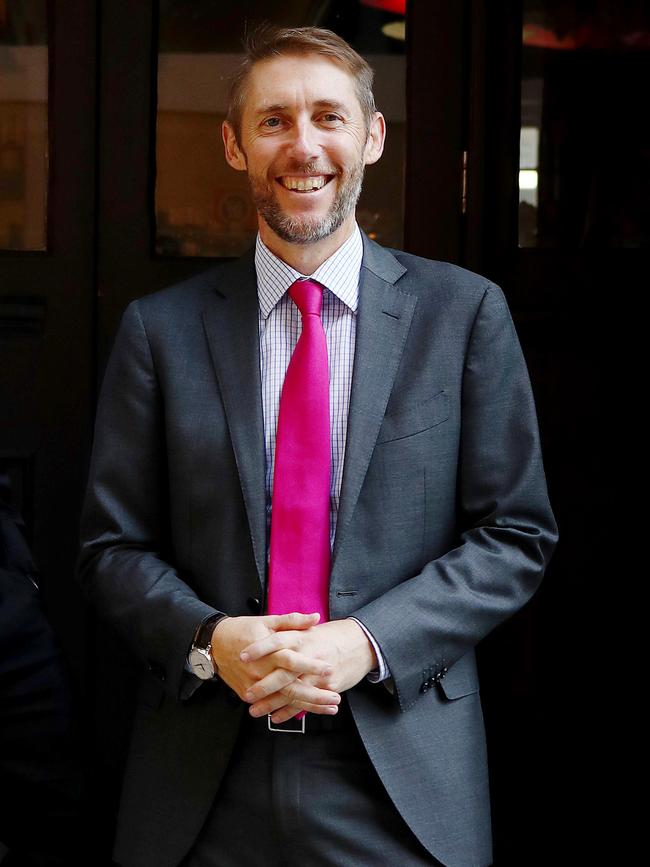
Fresh from the partial buyout of VicRoads, the $160bn Aware Super is preparing to make a string of big ticket investments, with long-term valuations across the board starting to look attractive again.
Aware’s chief investment officer Damian Graham’s comments come as the Australia sharemarket had a rocky start to the new year, closing down 1.3 per cent. This comes on the heels of a loss of 5.5 per cent for the S&P/ASX 200 during 2022.
Graham says Australia is entering the year in strong economic shape but the sharp jump in interest rates through last year means a slowdown is coming, along with some rise in unemployment.

“We’re not in the hard landing camp. But economic growth is going to slow – if we do in fact get a recession, it’s not going to feel like a deep recession,” he says in an interview.
The Reserve Bank has forecast Australian growth at 1.4 per cent in 2023, but most market economists are tipping growth of just 1 per cent, which leaves little room for the economy to absorb shocks.
“Markets have had a pretty good last three months really since September, where investors have said, ‘We can see a peaking of inflation, we can see central banks start to slow their rate rises, now we can start to look at the fundamentals of the economy – and it’s not too bad’.”
The market consensus is that cash rates will start to be cut in 2024 but Graham points out that equity markets will move well before that point.
Graham says his fund had been preparing for an inflation shock during the last few months of calendar 2021. That arrived with force through 2022 as central banks were forced to quickly change their footing to try and contain inflation with significant interest rate rises.
Recent months have been marked by heightened volatility as investors have attempted to anticipate the timing of the peak for inflation and interest rates. The calls from the market haven’t always been on the mark, particularly with the US Federal Reserve catching investors out toward the end of the year by indicating that rates have to climb higher.
There’s a variety of factors that are going to drive outcomes. But Graham sees a combination of resilient albeit slowing consumers, a softening housing market, and the potential for a recession in Europe and the US. This will be offset by a solid commodity cycle backing Australia. “My view is that markets have pulled forward the weakness at the start of this year and they’ve pulled forward the pausing of interest rates. I think that they’ll trade more sideways in the next three to six months leading into the end of the financial year.”
While inflation is poised to cool, Graham is bracing for an environment where it remains sticky for longer. That view can impact how billions of dollars of funds are invested.
While a painful adjustment, the rapid rise in cash rates by central banks has again given them room to move over the medium to longer term to stimulate the economy. A cash rate of zero simply gave central banks no room to move.
As long as the inflation can be curbed, there is capacity to cut the cash rate.
“Now you’ve got the higher rates and you’ve got some yield – which represents income. So cash is actually getting a return. Now fixed income is returning which just wasn’t the case until six months ago.”
The fund has upped its exposure to liquid alternatives such as private equity and hedge funds, to help smooth out the volatility of its investment strategies.
![]RBA Governor Philip Lowe has been attempting to cool the economy Picture: NCA NewsWire / Gary Ramage](https://content.api.news/v3/images/bin/95702970f001d22fbb96fa745326cd6d?width=650)
Aware was formed from the merger two years ago between VicSuper and First State Super, and now it is Australia’s third largest super fund measured by assets under management, behind AustralianSuper and Brisbane-based Australian Retirement Trust. In the last financial year it posted a negative return of 3.7 per cent across its flagship growth fund, which was on the back of an 18 per cent gain a year earlier.
The fund has increased its exposure to both local and international equities while reducing its exposure to cash.
With falls across all markets Graham says valuations have pulled right back which is delivering opportunities for all cashed up super funds.
“What I’ve been very focused on from a long-term perspective is how we keep finding good quality assets that we want to own for the long term.”
Last year Aware was part of a consortium including Macquarie that bought a stake in Victoria’s licensing and registry business VicRoads for an upfront price of nearly $8bn.
After just a few months into the 40-year concession, Graham says it is clear the registry business is a really strong asset for fund members. “It’s one that we believe will give us great stable cash flow and a fantastic return for members over the long term.”
Opportunities here and offshore are arising in the range of $500m-$600m, rather than the scale of VicRoads, but Graham is anticipating a “heavy year of investment”.
“In times of volatility you want to be a liquid buyer, not a forced seller – that’s always been our focus.”
The fund is skewing to opportunities in property and infrastructure, while continuing to have a high level of equity exposure for younger members.
He also points out a shift underway across renewable energy investment moving into 2030.
Big funds like Aware have invested heavily in solar and wind power in recent years, but are now looking for storage solutions like batteries. This is expected to attract as much as half of renewables investment over coming years.
“You need to be supporting the dispatchable nature of renewables. So it’s an impactful issue for us. And we like that concept. It needs to be a broad (energy) portfolio, not just wind farms, solar farms, but it’s also about how we build up battery storage approaches.
“(Energy) transmission is a huge issue in Australia. We need that full value chain across energy. That includes obviously generation, transmission, storage and obviously distribution.”
johnstone@theaustralian.com.au




One of the nation’s biggest superannuation funds has warned members to brace for months of choppy markets where Australia skirts a recession as interest rates push higher, but expects the economy will avoid a hard landing.